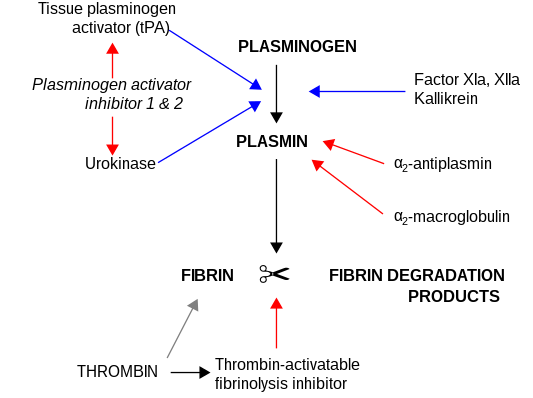Kallikrein
Kallikreins are a subgroup of
Occurrence
In 1934, Eugen Werle reported finding a substance in the pancreas of humans and various animals in such large amounts that the pancreas could be taken for its site of origin. He named it kallikrein, by derivation from the Greek word for pancreas. Since then, similar enzymes have been found in the biological fluids of humans and other mammals, as well as in some snake venoms.[1]
Venom
The caterpillar known as
The venom of
Plasma kallikrein
The KLKB1 gene encoding
Plasma kallikrein liberates

Structure
Kallikrein is homologous to factor XI and consists of four apple domains and one serine protease domain.[citation needed]
Tissue kallikreins
Distinct from plasma kallikrein, tissue kallikreins (KLKs) are expressed throughout the human body and perform various physiological roles. As some kallikreins are able to catalyse the activation of other kallikreins, several cascades involving these proteases have been implicated in the regulation of homeostatic functions.[citation needed]
Function
Similar to KLKB1, three tissue kallikreins
Genes
There are 15 known human tissue kallikreins:
]Clinical significance
Kallikrein-related peptidases are targets of active investigation by drug researchers as possible biomarkers for cancer.[13][14]
Prostate-specific antigen (PSA; hk3, human kallikrein gene 3) and human glandular kallikrein (hK2) are used as tumor markers for prostate cancer.[citation needed]
See also
- Prekallikrein
- Kinin-kallikrein system
- Kinin
- Aprotinin
- List of cutaneous conditions
References
External links
- The MEROPS online database for peptidases and their inhibitors: S01.212 Archived 2020-05-27 at the Wayback Machine
- Kallikreins at the U.S. National Library of Medicine Medical Subject Headings (MeSH)
